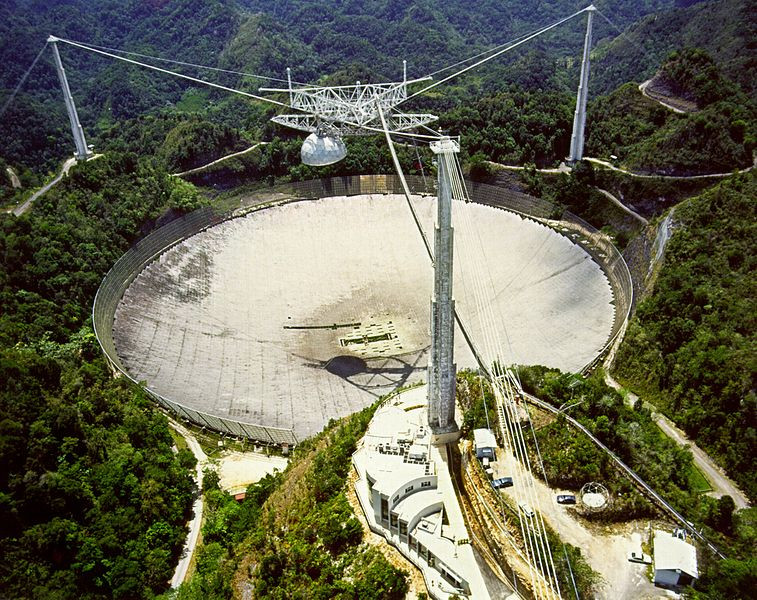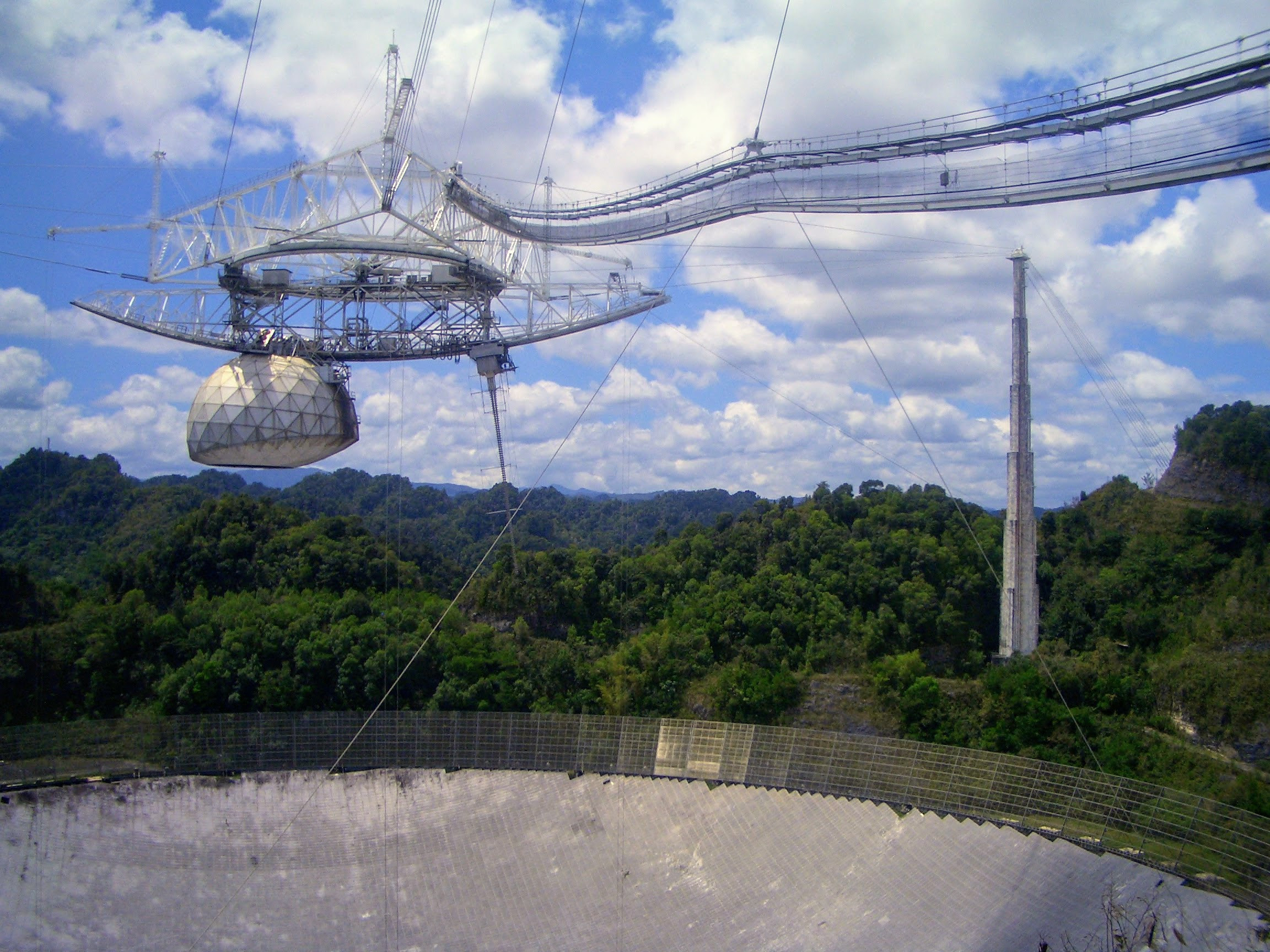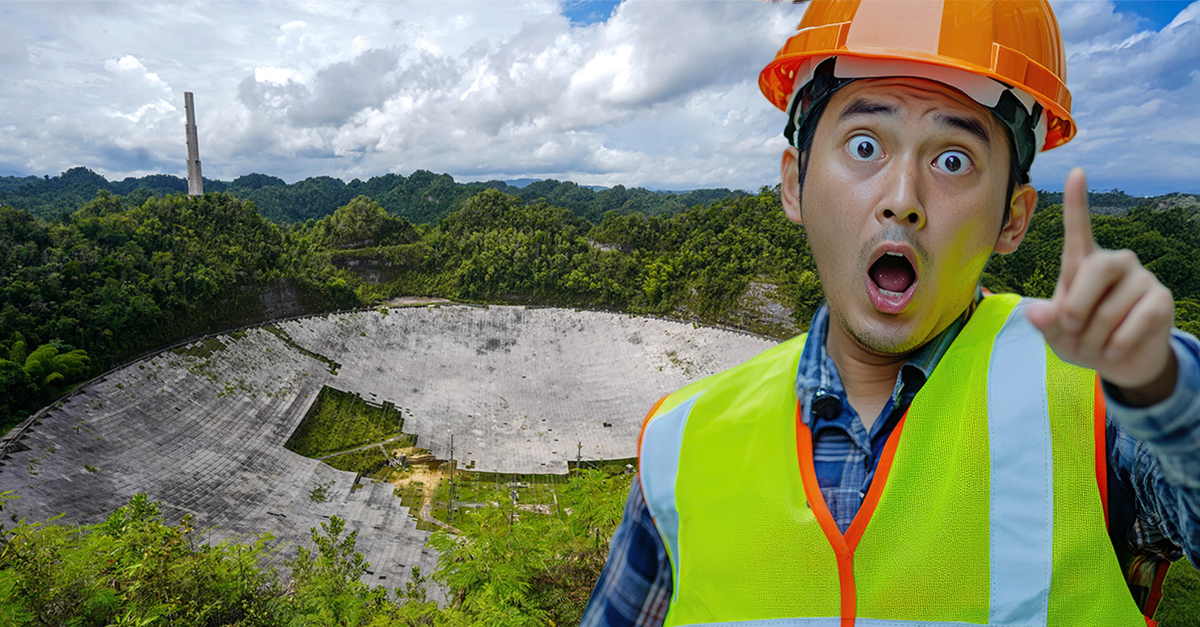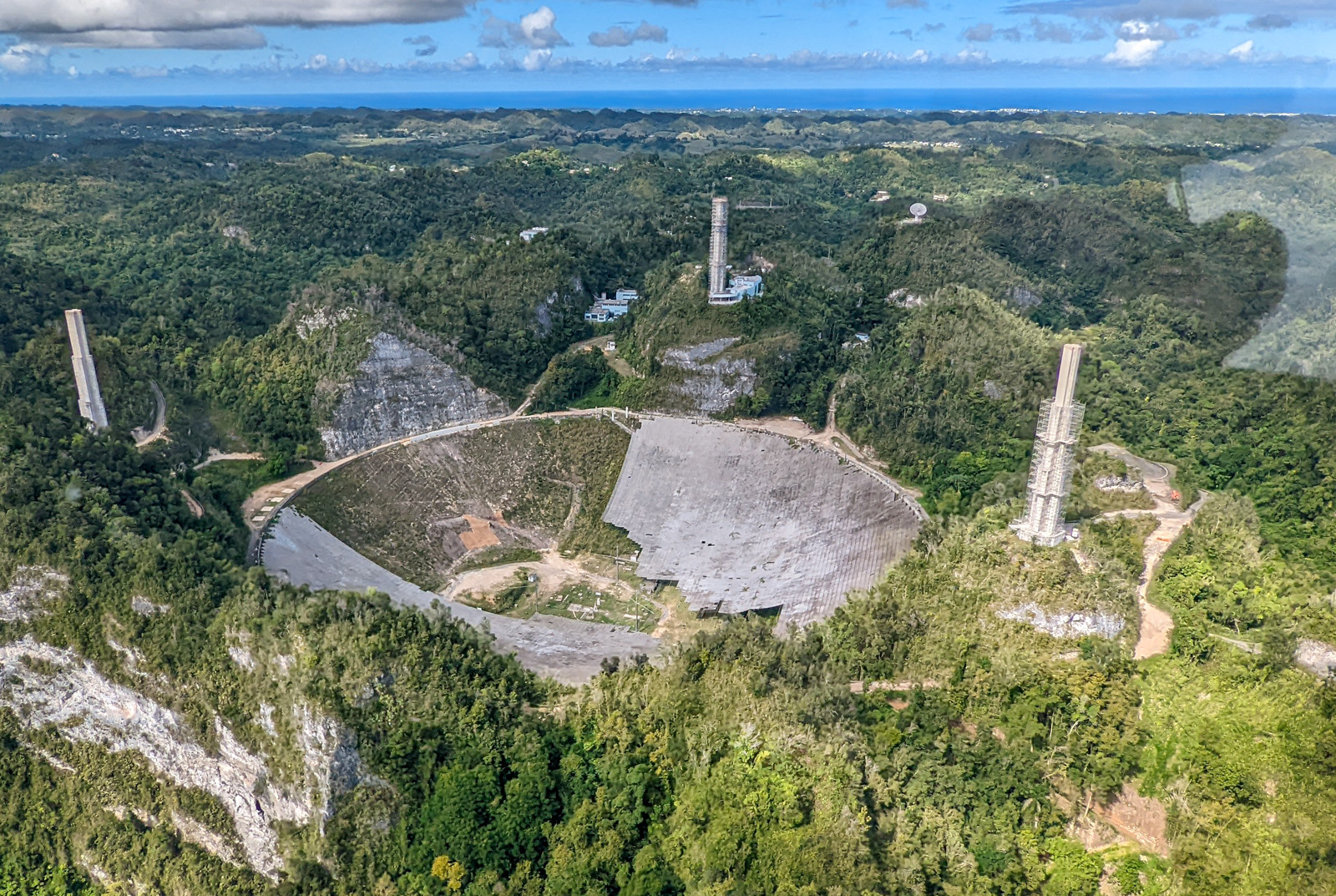For nearly six decades, the Arecibo Observatory in Puerto Rico stood as a monument to human curiosity, exploration, and technological brilliance. Once the world’s largest radio telescope, Arecibo unlocked mysteries of the cosmos, tracked near-Earth asteroids, and even played a role in the search for extraterrestrial life. But by 2020, what once symbolized mankind’s scientific ambition lay in ruins—abandoned, underfunded, and ultimately destroyed.
A Towering Achievement In Science
Completed in 1963, the Arecibo Observatory was a marvel of engineering. Its 1,000-foot-wide dish, nestled in a natural limestone sinkhole, allowed astronomers to peer deep into space. From measuring the rotation of Mercury to discovering the first binary pulsar, Arecibo was responsible for some of the most significant astronomical discoveries of the 20th century. It was not just a telescope—it was a cultural and scientific icon.
 H. Schweiker/WIYN and NOAO/AURA/NSF, Wikimedia Commons
H. Schweiker/WIYN and NOAO/AURA/NSF, Wikimedia Commons
A National Treasure Under Strain
Despite its achievements, Arecibo’s future began to dim in the early 2000s. Funding cuts from the National Science Foundation (NSF) left the facility increasingly vulnerable. Maintenance was deferred, upgrades were stalled, and the observatory struggled to stay relevant in an age of shrinking science budgets and new competitors like China’s FAST telescope. The cracks—figuratively and literally—began to show.
A Crisis Ignored
By 2017, Hurricane Maria had battered Puerto Rico and dealt significant damage to Arecibo. While some repairs were made, the storm exposed how fragile the telescope had become. Warnings about failing cables and structural issues were raised, but responses were delayed or incomplete. Without robust funding or political follow-through, the observatory’s slow decay went on, even while scientists pleaded for its salvation.
The Sudden Collapse
In August 2020, a support cable snapped and tore a gash in the dish. Engineers hoped to stabilize the structure, but just months later, another cable broke. It became clear that the 900-ton suspended platform—held up by aging towers and cables—couldn't be repaired safely. On December 1, 2020, before any controlled demolition could take place, the platform collapsed dramatically, smashing through the dish in a final tragic descent.
 EgorovaSvetlana, Wikimedia Commons
EgorovaSvetlana, Wikimedia Commons
The Symbolism Of Abandonment
Arecibo’s fall wasn’t just a structural failure—it was a symbolic one. Here was a tool that had once helped humanity listen to the stars, now lying in a heap of twisted metal and shattered dreams. The image of its ruined dish came to represent more than a telescope’s end; it reflected a broader trend of scientific neglect, short-term thinking, and the shaky nature of our commitment to exploration.
A Loss Felt Worldwide
Scientists around the globe mourned the collapse. Arecibo had been more than a research tool; it was a beacon of international collaboration and discovery. For Puerto Ricans, it was a point of pride—a scientific jewel on their island. Its destruction felt personal, and its loss underscored the consequences of allowing infrastructure to rot through apathy and underinvestment.
A Warning For The Future
The story of Arecibo is not unique. Other scientific institutions face similar financial and political pressures. The loss of Arecibo goes to show innovation can't thrive without sustained support. When budgets get slashed and warnings go unheeded, we risk losing physical structures and the inspiration to knowledge they represent.
The Legacy Lives On
Though the dish is gone, Arecibo’s legacy endures. Data collected over decades still fuels research. Its dramatic collapse sparked renewed conversation about the importance of funding science. Plans are underway for educational centers and new facilities in its place. New space telescopes have been established in orbit. But nothing can replace the awe-inspiring sight of Arecibo’s massive ear to the universe.
You May Also Like:
Insightful Facts About Planet Earth
Expansive Facts About Our Solar System











